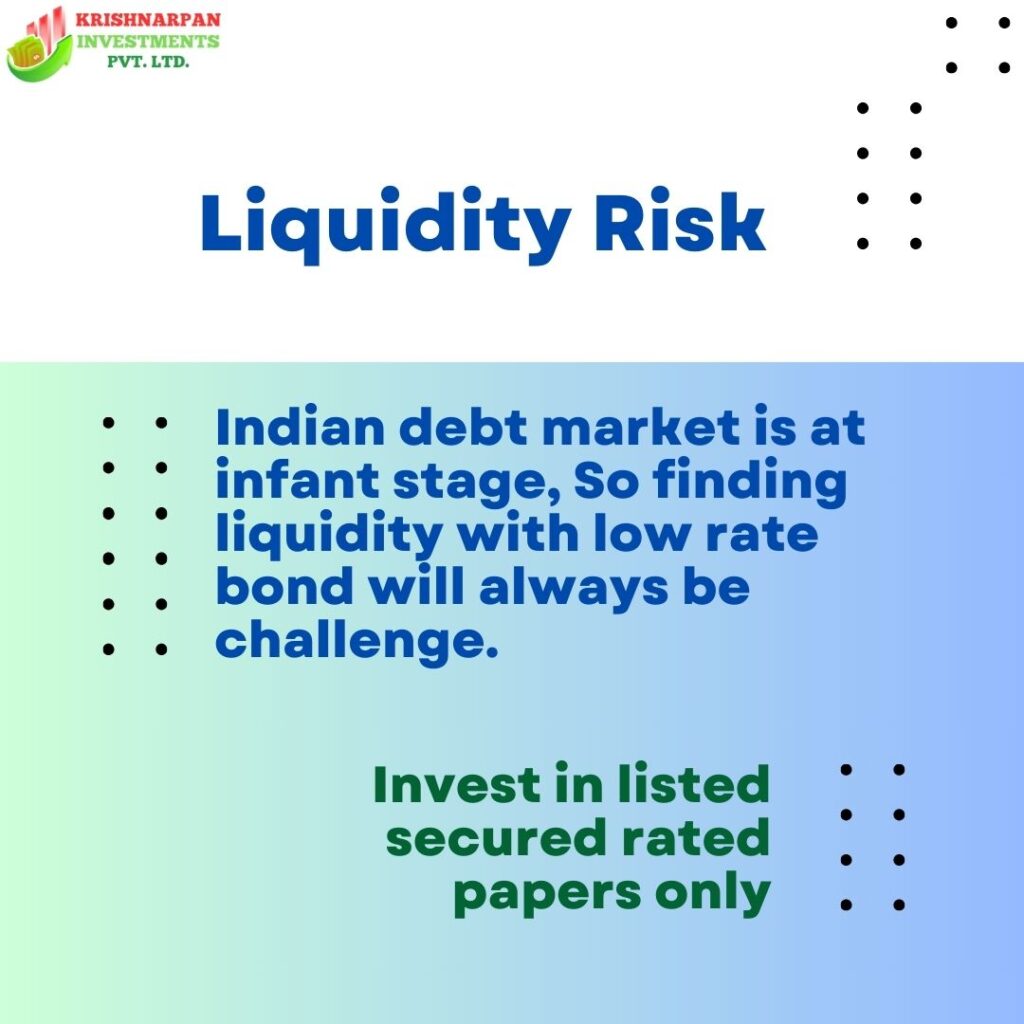The world of finance offers a multitude of investment opportunities, and the debt market is one such avenue that often appeals to investors seeking stable returns. However, like any investment, the debt market comes with its own set of risks that investors must understand and manage. In this article, we will explore three key risks associated with the debt market.

1. Capital Risk In Debt Market:
Capital risk, also known as credit risk, is a fundamental concern for debt market participants. It arises when you invest in bonds or securities issued by companies or institutions that may face financial difficulties. This risk becomes most apparent when you chase higher interest rates. Companies offering significantly higher yields may do so to compensate for their lower creditworthiness. If the issuer defaults on interest payments or the principal amount, investors face the risk of losing their capital.
To mitigate capital risk, it’s essential to conduct thorough research on the issuer’s financial health and creditworthiness. Diversifying your bond portfolio can also help spread this risk.

2. Interest Rate Risk :
Interest rate risk is an inherent aspect of the debt market. It comes into play when market interest rates fluctuate. Simply put, when interest rates rise, the value of existing bonds with lower yields decreases. This can result in capital losses for bondholders, especially if they need to sell their bonds before maturity.
To manage interest rate risk, investors often use strategies like laddering their bond portfolios, which involves holding bonds with varying maturities. This approach helps mitigate the impact of rising interest rates, as some bonds mature and can be reinvested in higher-yield bonds.

3. Liquidity Risk:
Liquidity risk is a unique challenge in the Indian debt market, particularly when dealing with lower-rated bonds. The Indian debt market is still evolving, and finding liquidity for less creditworthy bonds can be challenging. If you need to sell your bonds quickly, you might face difficulties, and this could impact the price you receive.
To address liquidity risk, consider sticking to more liquid segments of the debt market, such as government securities or bonds issued by highly reputable companies. Additionally, maintain a diversified portfolio to reduce your overall exposure to liquidity challenges in specific bonds.

In conclusion, the debt market offers the potential for stable returns, but it’s essential to be aware of and manage the risks involved. Capital risk, interest rate risk, and liquidity risk are three crucial aspects to consider when navigating the debt market. By conducting thorough research, diversifying your portfolio, and implementing risk management strategies, you can make informed investment decisions that align with your financial goals.
Remember that seeking advice from financial professionals and staying updated on market conditions can further enhance your ability to manage these risks effectively.


